 |
|

|
|
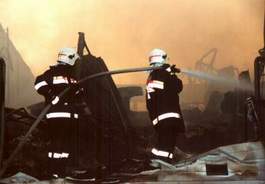
|
|
Vienna is the capital of Austria and at the same time it is the
biggest town in the country - 1,7 million inhabitants living in
a very congested urban area. If a fire breaks out here it can
be disastrous. So it is necessary to provide all essential information
for the fire brigade instantly. Data of 24,000 street names, 35,000
intersections, 2,000 sensitive locations and other relevant location
information, more than 200 vehicles stationed in 25 fire stations
are providing security for the city. More than 1,000 sites equipped
with numerous fire and smoke detection systems are connected to
the fire brigade too. 480 firemen are doing service in Vienna
every day a year - 24 hours per day. They are organized in units.
Each unit is assigned to one or more (alternative) cars. The dispatching
officers alarm the units differently if it is nighttime or daytime.
|
| |
|
But what has this to do with RTA?
Well, what is when Vienna is on fire? Or just something is on
fire? Humans would simply not be able to process this huge amount
of necessary information in such a short period of time.
|
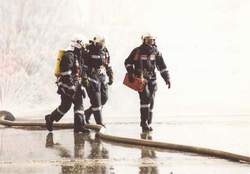 |
|
The Viennese fire brigade was aware of that since a long time
and that is why they operate one of the worlds most sophisticated
Computer-Aided Dispatch (CAD) systems
since over 12 years now. Four redundant servers support the CAD
system and provide all essential information to the dispatching
officers in real-time from all different sources like via radio,
remote data transmission lines, LAN, WAN etc.
Seven dispatching officers are able to work simultaneously on
dedicated dispatching stations. Supporting personal can, in case
of high emergency, operate additional supporting terminals.
An integrated real-time Decision Support System
(DSS) automatically determines and selects all the resources
in real-time that are required for a specific emergency call.
Once an officer has decided which type of emergency he has to
deal with, e.g. fire in a room, fire under the roof, person stuck
in elevator etc., the system automatically allocates all the necessary
resources and recommends it to the officer. The officer can change
this recommendation, but in most cases he won't. With a click
of a button he is able to launch the alarm and dispatch the forces
|
| |
|
During the alarm the CAD servers automatically establishes all
necessary means of communication to all concerned units. E.g.
a unit that is currently on the road will automatically be alarmed
via radio while the same unit, when it is back at the fire station,
will be alarmed via the fire brigade's own transmission lines
that interconnect all fire the stations in Vienna. The CAD also
monitors if vehicles are leaving their fire station timely (30
seconds during daytime, 60 seconds during nighttime) and notifies
the dispatchers if there are problems with vehicles getting to
the scene. The whole system is designed to maximize performance,
in all aspects, from the security to the comfort for the inhabitants
AND the fire fighters as well.
|
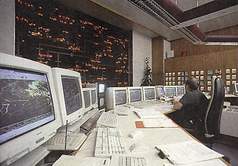 |
|
The most challenging part of the system is the one that provides
most of the support to the dispatching officers - the DSS. It
is based on complex rules, which are processed in real-time in
order to determine which forces have to be allocated. To achieve
that the DSS has to process a lot of real-time information like:
- Type and status of vehicles (e.g. is vehicle ready or is
it currently at the scene?)
- Locations of vehicles (e.g. is an available vehicle close
to the scene?)
- Status of fire stations (e.g. are enough vehicles left for
nearby interventions?)
- Location of emergency (e.g. which units are closest and have
to be alarmed?)
- Type of location (e.g. is the location residential area,
a theatre, a chemical plant?)
- Current date and time (e.g. if the location is a theatre,
do they currently play?)
|
| |
|
Out of all that options the DSS has to determine in a second
how many forces and which forces to allocate and to provide it's
recommendation to the dispatching officer. On top of that the
DSS has to take care of resource sharing problems. Since the seven
main dispatching stations can operate simultaneously the DSS has
to make sure that it does not allocate resources, like vehicles,
twice even if alarms are being executed at the same time. This
means that even milliseconds matter since all that has to happen
in real-time and as fast as possible.
|
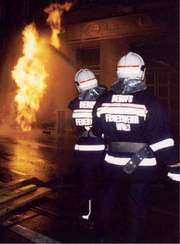 |
|
Here the RTA (Real Time Architecture) plays a major role. It's
Real Time Database allows very fast access to all that information
and at the same time distributes this information in real-time
over the LAN to all 4 CAD servers. This is critical because the
redundant servers have to stay up-to-date with all process information.
Humans would simply not be able to process this huge amount of
information in such a short period of time - that what we said
before. This makes the DSS, which is based on RTA, a powerful
tool for the dispatchers. It allows the officers to work more
efficient and to concentrate on the real issues - talking to the
people on the phone that place the emergency calls and finding
out WHAT is really going on - WHAT type of emergency do we have
to deal with. This is still the most important decision to make
in the whole process. And it is still left to the dispatching
officer. A computer will never do this decision because it requires
'human' skills - a lot of skills. The whole CAD system was put
into operation in mid 1988 and was never shutdown since - thanks
to the redundancy concept of the RTA. That's what fire fighter
call security!
|
|
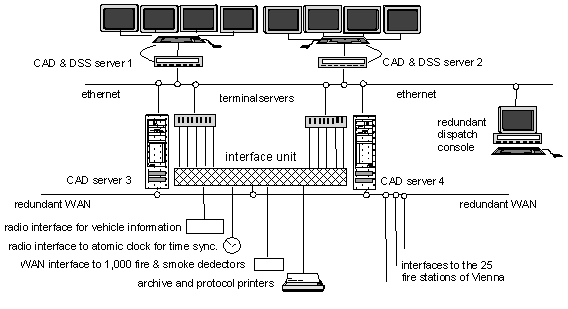
|
|



